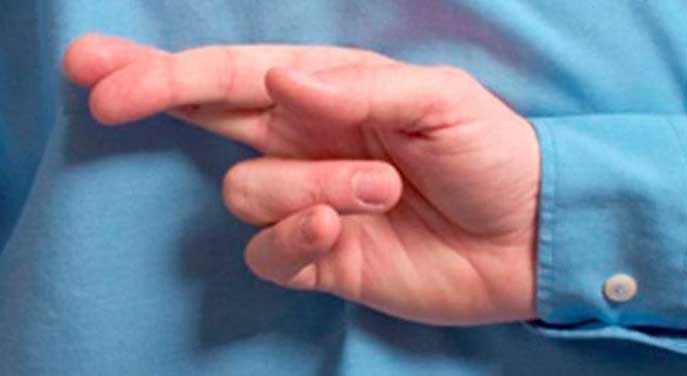 During my years as a therapist, it became second nature to notice the body language of my clients. During our conversations, I would sit across from people and try to infer how they really felt about an issue from their nonverbal signals.
During my years as a therapist, it became second nature to notice the body language of my clients. During our conversations, I would sit across from people and try to infer how they really felt about an issue from their nonverbal signals.
When clients were authentic, their expressions, gestures, and expressions were aligned with their verbal messages. But when they were unconvinced or trying to “fake it,” their body language and spoken language were out of sync.
Soon it became second nature to look for nonverbal cues and use what I learned to help people recognize internal resistance or to surface genuine feelings in order to make positive changes in their lives. Now I speak on the impact of body language on leadership effectiveness to audiences around the world. I also show leaders how to read the body language of their audiences.
But I can be fooled. So can you.
Whenever we meet new people, our brains automatically and immediately begin to categorize them in some way – male or female, same or different, friend or foe, etc. – in order to predict what is likely to happen next.
Because none of us have the mental agility to consciously perceive and process all the factors needed to make these calculations, we rely on mental shortcuts that leave us vulnerable to a variety of judgment traps.
Why it’s hard to spot a liar by Carol Kinsey Goman
Most of the observable signs of lying are dependent on the liar feeling a negative emotional arousal and an uncomfortable sense of conflict
Because we are programmed to evaluate others in predictable ways, people improve their chances of fooling us when …
- They find things we have in common
People define themselves in terms of social groupings: Any group that you feel part of is an “in-group,” and any group that excludes you is an “out-group.” While out-group differences make us wary, in-group similarities make us feel comfortable.
The extent to which we feel someone is similar to us, even on a superficial physical level, has a huge impact on our attitude toward that person. This is why mirroring – someone assuming the same postures, gestures and facial expressions as you – makes you perceive him or her as significantly more persuasive and honest.
- They act “appropriately”
We all tend to judge another person’s true emotions based on our ideas of appropriate behaviour. This shows up in lie detection, for example, when you believe that you know how you’d act if you were telling the truth – and that other truthful people would/should behave the same way.
- They are attractive
It may be unfair, and even if we proclaim otherwise, we judge people by their appearance. Because of this unconscious bias, we automatically assign favourable traits to good-looking people, judging them to be more likeable, competent, and honest than unattractive people.
- They flatter us
Our susceptibility to flattery stems from a simple desire to feel good about ourselves. Whether you realize it or not, we can be unduly influenced by people who first butter us up with compliments about our intellect, style, or personal charm.
- They maintain good eye contact
Eye contact bears no relationship to honesty – but the most commonly believed myth about deception is that liars can’t look you in the eyes. When someone looks at us when speaking, we tend to believe them.
- They dress the part
Appearance plays a huge role in creating an impression of credibility. It has been proven that people are more likely to give money (in the form of charitable donations, tips, investments) or information to someone if that person is well dressed. The better-dressed someone is, the more apt you are to believe them and follow their suggestions.
- They tell us what we want to hear
“If you serve on this committee, you’ll hobnob with the company’s top executives.” “This project will give you the experience and exposure you need for that next promotion.” “You’ll only have to work overtime on rare occasions.”
Maybe. Or maybe it’s just a less-than-truthful come-on from someone who understands that you are more likely to be convinced by saying exactly what you hoped to hear.
- They charm us
The term “halo effect,” coined by psychologist E. L. Thorndike, describes how our perception of one desirable trait in a person can cause us to judge that person more positively overall. For example: When a con artist is charming (and most of them are), we tend to automatically believe that he/she is also perceptive, candid, and on our side.
- They do favours for us
It doesn’t take an unethical favour or expensive bribe to make us feel indebted to someone – and the payback doesn’t have to be stated in an obvious manner. A close look at the psychology of relationships reveals that most individuals automatically attempt to keep a mental balance between what they contribute to a relationship and what they get back from it. When someone does us even a small favour, we feel obligated to reciprocate.
- They touch us
The expression “That person is an easy touch” refers to the persuasive power of touch because even casual and brief touches (on the shoulder, arm, or hand) have a much bigger impact than you might guess. In what has been labelled the “compliance effect,” research has found that touch increases the likelihood that people will do what you request. It’s also been shown that a subject being touched feels increased trust in and connection with the person who initiates the touch.
Many of these 10 behaviours are also techniques of persuasion that can be used for benign – or even positive influence. But in the hands of manipulators or deceivers, they become sneaky ways to raise their credibility and lower your guard.
Troy Media columnist Carol Kinsey Goman, PhD, is an executive coach, consultant, and international keynote speaker at corporate, government, and association events. She is also the author of STAND OUT: How to Build Your Leadership Presence. For interview requests, click here.
The opinions expressed by our columnists and contributors are theirs alone and do not inherently or expressly reflect the views of our publication.
© Troy Media
Troy Media is an editorial content provider to media outlets and its own hosted community news outlets across Canada.


